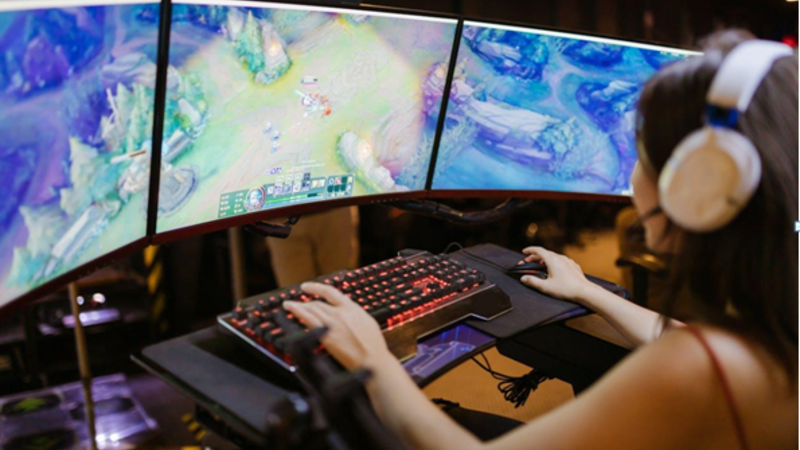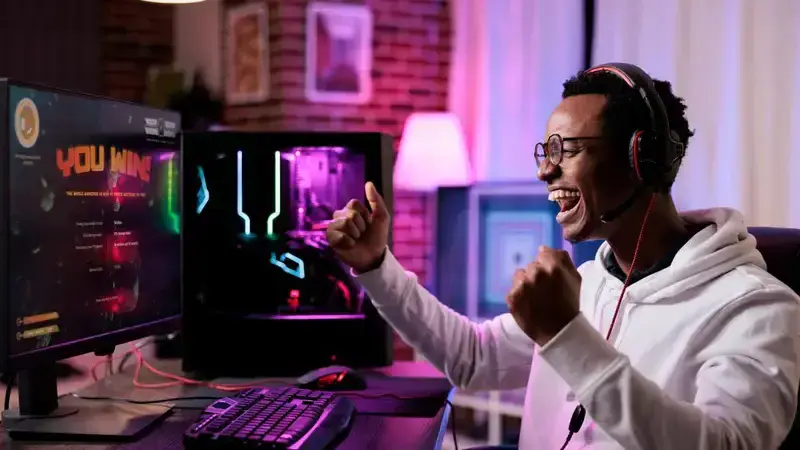Why does Beginner’s Guide to Boosting Your Gaming Setup computer feel like it’s giving up on life just when you need it the most? One minute, you’re installing a new game, dreaming of ultra graphics and smooth frame rates. The next, you’re stuck staring at a loading screen that could give the DMV a run for its money.
If you’re new to all this, it’s easy to think you need to throw your whole machine out the window and start fresh. But the truth is, you don’t need to be a tech wizard—or have a millionaire’s budget—to level up your gaming setup. Most of what slows your system down has less to do with how “old” it is and more to do with the stuff inside (and how it’s being used).
In this blog, we will share practical and beginner-friendly ways to improve your gaming setup without breaking the bank or losing your mind over technical jargon.
Understanding what’s actually slowing you down
Let’s start simple. Your gaming PC is like a car. If the engine’s fine but your tires are flat and your fuel tank is full of molasses, it won’t go very far. Same with your computer. Even if you have a decent graphics card, there are other parts of the machine that can drag everything down.
One of the most common issues? Storage. Many beginner-friendly or older PCs come with what’s called a mechanical hard drive. It’s kind of like storing your clothes in a suitcase versus a dresser. You can still get them, but it takes longer to find what you need.
This is where an upgrade makes a huge difference. Learning how to install an SSD to PC might sound like a big leap, but it’s one of the easiest and most affordable changes you can make. An SSD—or solid-state drive—uses flash memory instead of spinning disks. Translation? Everything opens faster. Your PC boots quicker. Your games load in seconds, not minutes.
Don’t let the install process scare you. It’s often as easy as opening your case, plugging in the drive, and either installing Windows from scratch or copying your current setup onto the new drive. There are YouTube videos that show you step by step, and many SSDs come with free software to help with the data transfer.
And yes—it’s okay to ask a friend or a technician to help the first time. But once it’s in? You’ll wonder why you didn’t do it sooner. The upgrade isn’t flashy, but the difference it makes is huge. Like going from a tricycle to a motorbike.
What you can actually see and feel during gameplay
You know those TikToks where gamers have setups with bright lights, dual monitors, and desks that look like spaceship control panels? You don’t need all that. But there are things that matter.
Let’s talk monitors. Most people don’t realize that screen refresh rate can actually affect how fast you react in a game. A monitor that refreshes 144 times per second (144Hz) doesn’t just look smoother—it shows you information sooner. That’s milliseconds shaved off your reaction time. And in online games, that matters more than having the prettiest graphics.
The good news? You can get a decent 1080p 144Hz monitor without selling your kidney. Combine that with the SSD upgrade we mentioned earlier, and your experience transforms. No more waiting. No more skipping frames.
Next up: peripherals. A lot of people stick with whatever keyboard and mouse came with their PC. But gaming gear doesn’t have to be expensive to be effective. A basic mechanical keyboard gives you better feedback. It feels “snappier.” And a proper gaming mouse helps you aim faster and more precisely.
Don’t forget comfort.Beginner’s Guide to Boosting Your Gaming can’t grind ranked matches for hours in a chair that makes your back cry. A simple, ergonomic chair or a decent cushion goes a long way. Even a wrist rest can make a difference. It’s not about being fancy—it’s about being able to focus on the game, not your sore neck.
Fixing the stuff behind the scenes
Now let’s talk software. You might not see it, but your system is often doing way too much in the background. Programs running at startup, updates downloading without your knowledge, antivirus scans during a boss fight—it all adds up.
Here’s a basic checklist:
- Press Ctrl + Shift + Esc to open Task Manager.
- Go to the Startup tab and disable things you don’t need.
- Check Processes to see what’s eating your memory.
- Update your graphics card drivers. You can do this directly from NVIDIA or AMD’s websites.
- Go into Power Settings (search it in the Windows bar) and switch to High Performance.
And when you’re in-game, don’t be afraid to tweak settings.Beginner’s Guide to Boosting Your Gaming don’t need everything on Ultra. Try reducing shadows, turning off motion blur, or using DLSS if your game supports it. The goal is smooth gameplay, not screenshots for Instagram.
Why setups look different in 2025
Gaming today isn’t what it was ten years ago. It’s not just a hobby for kids in basements. It’s a full-blown culture. There are streamers earning six figures, esports teams sponsored by major brands, and tournaments watched by millions.
Naturally, this influences how we build our setups. There’s more interest, more variety, and more gear than ever before. That’s why even casual gamers now have RGB keyboards and dual monitors. It’s about style, sure—but also about functionality. People spend time in their gaming spaces, and they want them to feel good.
Another shift? The tech itself. The latest games are big. We’re talking over 100GB sometimes. And they’re packed with advanced graphics and physics. Tools like DLSS (Deep Learning Super Sampling), ray tracing, and AI-driven rendering are changing the game—literally.
Your system needs to keep up. Not by being the newest, but by being smartly upgraded. That’s where SSDs, better monitors, and light software tuning come in.
The simple truth that most beginners miss
Here’s something most people don’t realize: you don’t need to replace your whole PC to get better performance. You just need to replace the right parts.
Think of it like cooking. You don’t need a Michelin-star kitchen to make great food. But you do need a sharp knife and a pan that heats evenly. Same with gaming. Get your storage sorted. Get a screen that keeps up. Stop your computer from wasting resources on things you don’t use.
You don’t have to do it all at once, either. Start with the drive. Then maybe the monitor. Then your keyboard and mouse. Each small step builds on the last. Before you know it, your once-slow setup starts feeling fast and fun again.
And when your game finally launches instantly, runs without stutters, and looks sharp—even on a system that’s a few years old—that moment? That’s the real win. Not flashy. Not loud. But satisfying in a way only gamers truly understand. If you need more details to WORLD US MAGAZINE visit.

